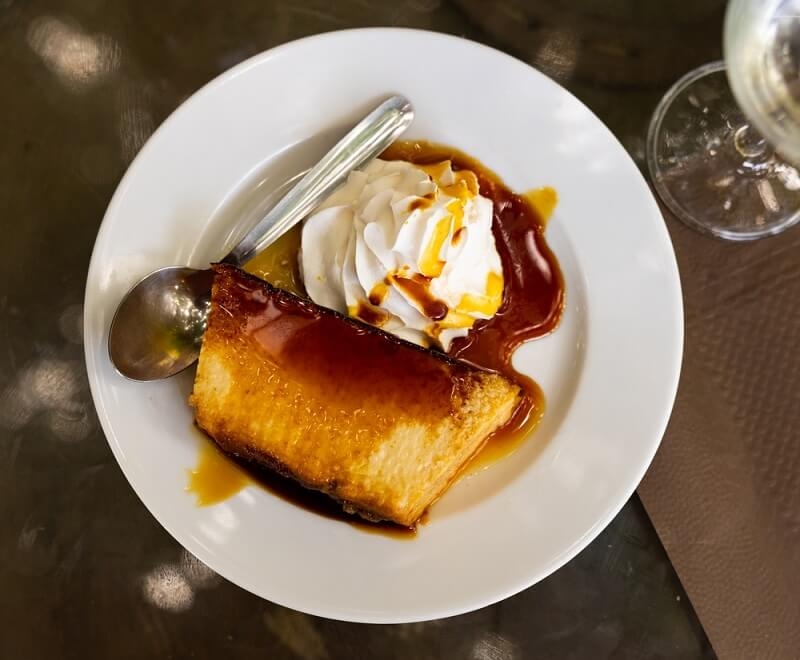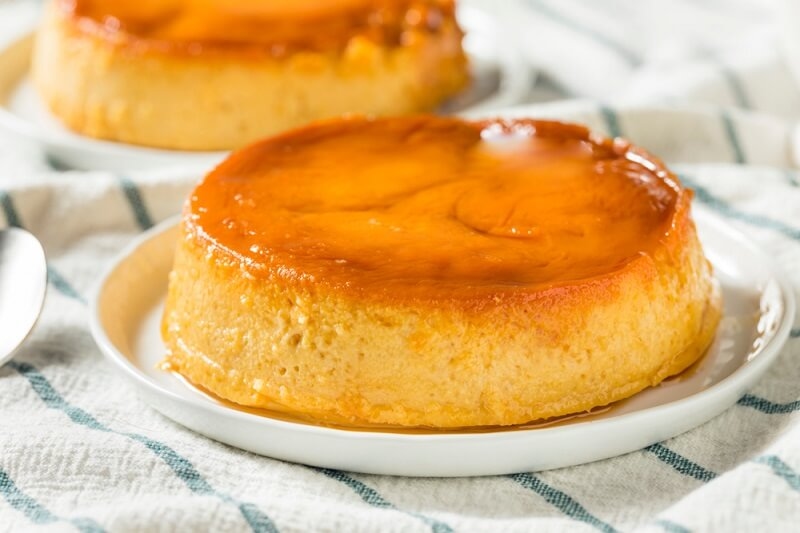
Flan has few competitors when it comes to its unique silky taste and sweet charm. Over the years, this creamy and smooth delight with caramel on top has become one of the treats most associated with Spain and the entire Latin American region. It is quite simple, very comforting, and even quite elegant in the sense that it can be used to celebrate any kind of holiday or be on the festive table at a family reunion.
This guide is basically a journey that introduces you to the history of the dish, provides some hints for making it, and gives some ideas for new variations. Finally, you will be able to successfully prepare this luscious custard at home.
Spanish flan dessert is considered a mix of custard and pudding, but it is smoother and has a finer consistency. It includes basic ingredients as mentioned: eggs, sugar, and milk; still, the taste feels like something from the upper socio-economic part of the world. The intensely flavored caramel sauce that goes over the top of the cake is what makes the presentation stunning after the flan is removed from its mold.
For the people of Spain, flan is not just an ordinary dessert. It is deeply rooted in the cultural identity and is a staple at family dinners, eateries, and while celebrating feasts. Even though every area might add a couple of spices to make it a little distinctive, the idea, quite literally, of a sweet egg milk dessert covered with caramel sauce, stays intact, and is largely adored by many.
Flan could be traced back to Roman times when people used to prepare custards with honey and eggs. During the period when sugar obtained widespread use, the empire of flan grew to the caramel-topped variety faithful to what we recognize today.
During the colonial era, the Spanish colonists introduced flan to Latin America; since then, it has been incorporating local flavors such as coconut, pumpkin, or even coffee. Nevertheless, the original milk caramel flan (dulce de leche)—made from only milk, sugar, and eggs—is still the one with the longest tradition.
We will now see the steps to take in order to make a simple Spanish flan at home.
One of the most prominent aspects of this recipe for caramel custard is the minimal number of ingredients it requires. Here is a simple list for creating a classic flan:
This is a bunch of easy ingredients mostly found in every kitchen and also reasonably inexpensive making it one of the easiest-to-prepare desserts even during the middle of the week.
Heat the sugar in a saucepan over medium flame until it is completely melted and has a golden amber color. Stir gently but cautiously so as not to burn the caramel. Transfer the caramel to your baking dish or ramekins and spread it evenly by turning the pan. Let it cool and become a solid for a bit.
Beat the eggs in a mixing bowl until the yolk disappears and the white is combined. Put in the vanilla, milk (condensed) and leche evaporada (milk). Whisk the ingredients until fully integrated; however, do not overdo it, as this will create bubbles.
Fill the baking dish with the custard mixture and set it on top of the hot water bath. (A water bath is when you put the baking dish in a bigger pan filled with hot water.). 350°F (175°C) 50: 60 minutes or to check the doneness, the insertion of a knife in the center of the dish returns clean, which indicates that the baking time is achieved.
Give the flan time to cool to room temperature and then refrigerate it for at least 4 hours or ideally overnight. Serving can be done by sliding the blade through the edges and turning the plate upside down. The caramel will beautifully envelop the custard.
This technique leads to a lovely flan which is rich yet light and silky at the same time.

Some people prefer not to use the oven, and luckily, there are methods to prepare a creamy flan without oven as well. One of the common alternatives is steaming. Here is the way:
The steamed flan is just as good as the one baked, and some consider the slightly lighter texture their favorite. This method is especially good in hot places or when you do not want the kitchen to get hot.
Flamenco dessert can be conquered if the tips below are followed diligently:
These tiny details make a huge difference in creating the authentic flan de leche.
Though the original recipe will always be your go-to, you can try out a few outlandish angles with the following modes:
While all the different flavors keep the custard base, they entice the customers with new tastes. In addition to this, they also turn Spanish holiday desserts not only limited but also trendy.
Although flan is a straightforward dessert, its newcomers barely manage it without making some mistakes along the way. Here are some of the common problems they meet and the solutions to them:
Making the same mistakes over and over will become less frequent and you will soon be able to produce flan that is not only smooth but also has that high gloss reflection.
Spanish flan is a classic that is always a go-to for its ease and elegance. Regardless of whether the oven method is used or not, the outcome will be the same—it will be a big hit with the family and guests.
It’s a dessert that can comfortably be the star of any event, from non-formal dinners to Spanish Christmas dessert tables. Once you get the knack of this caramel custard recipe, it will not only be for the taste but also for the satisfaction of presenting a traditional and heritage-based treat that you will keep coming back to.
This content was created by AI